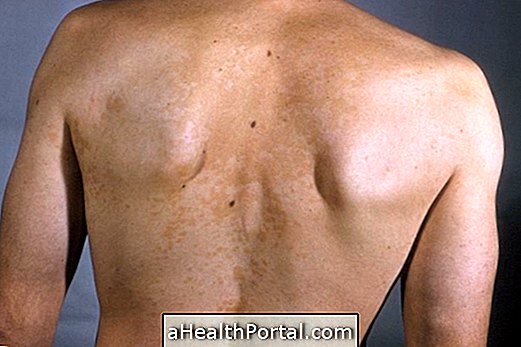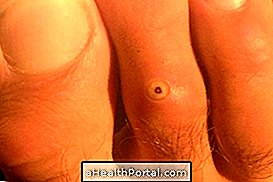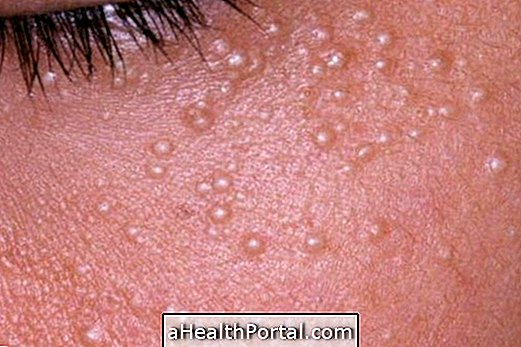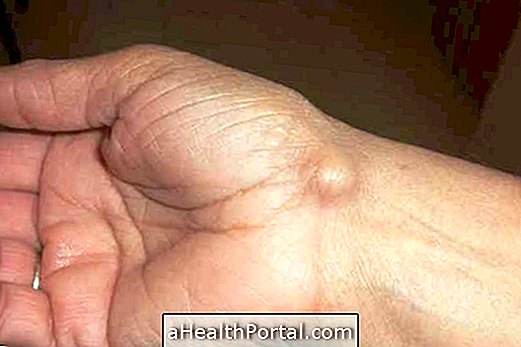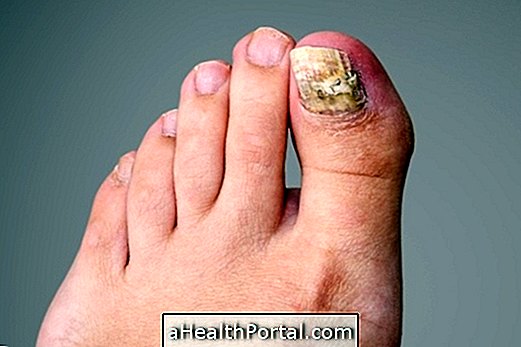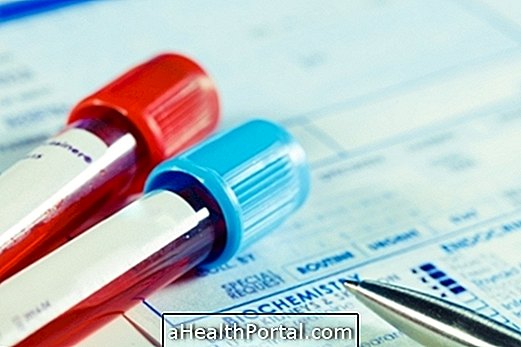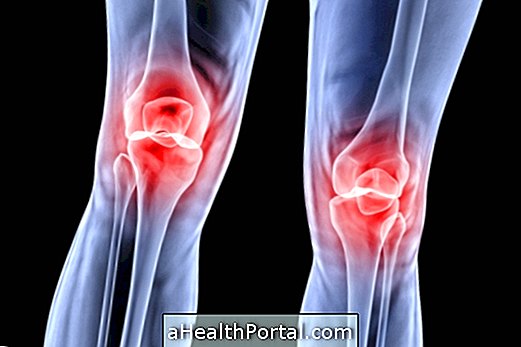Dermographism is a type of allergy to the skin, which is characterized by the appearance of swelling after a stimulus caused by a scratch or skin contact, which may be accompanied by itching and redness in the surrounding area.
People who have this type of allergy, also called physical urticaria, have an exaggerated immune response of the body after a pressure exerted on the skin, having a reaction in the same format of the stimulus caused.
Although there is no cure, seizures can be prevented, avoiding the causative agents, and it is possible to alleviate the symptoms with the use of anti-allergy medicines.


Symptoms of Dermographism
The symptoms usually appear about 10 minutes after the stimulus, and last for about 15 to 20 minutes, however, they can last longer according to the severity of the disease and the type of immune reaction of the person. The main ones include:
- Appearance of welts on the skin, white or reddish color;
- Swelling of the affected area;
- It can be itching;
- There may be redness and heat in the surrounding skin.
The lesions tend to be more intense at night and, moreover, happen most easily during situations such as physical activity, stress, hot baths or use of certain medications, such as penicillin, anti-inflammatories or codeine, for example.
To diagnose dermographism, the dermatologist can test with a pressure on the skin with an instrument called a dermograph or with another object that has a thick tip.

How is the treatment done?
The treatment of dermographism is not always necessary, because the symptoms usually appear occasionally, and disappear without needing medicines.
However, in cases where the symptoms are intense or persistent, the use of antihistaminic drugs such as Desloratadine or Cetirizine may be recommended.
In more severe cases, in which the person feels psychologically affected by the disease, anxiolytic or antidepressant drugs can be used according to the medical orientation.
Natural Treatment
A great natural treatment to relieve the symptoms of dermographism is the use of refreshing skin lotions made from 1% Menthol or Lavender essential oil. Check out a home remedy recipe for irritated skin.
Other natural ways to control the seizures of this allergy are:
- Have an anti-inflammatory diet, rich in fish, seeds, fruits, vegetables and green tea;
- Avoid foods with additives such as preservatives, salicylates and dyes;
- Avoid using certain medicines that increase the immune response of the body, such as anti-inflammatories, AAS, codeine and morphine, for example;
- Avoid situations of emotional stress ;
- Prefer fresh and comfortable clothes, and avoid overheating;
- Avoid hot baths ;
- Decrease consumption of alcoholic beverages .
In addition, it is possible to do the homeopathic treatment for dermographism , known as Histaminum, which can help control the onset of allergy symptoms on the skin.
Who has dermographism can do a tattoo?
Although there is no formal contraindication for performing tattoos on people with dermographism, it is generally recommended to avoid it, as it is not possible to predict the intensity of the allergic reaction that the person will develop, since tattooing is quite a procedure aggressive.
So even though dermographism does not alter the healing ability of the skin, there may be an intense allergic reaction after the tattoo, which can be very uncomfortable, cause intense itching and cause a greater risk of infection.
Therefore, before making a tattoo, it is advised that the person who has dermatology talk to the dermatologist, who will evaluate the severity of the disease and the type of reaction that the skin presents, and then make more specific guidelines.
